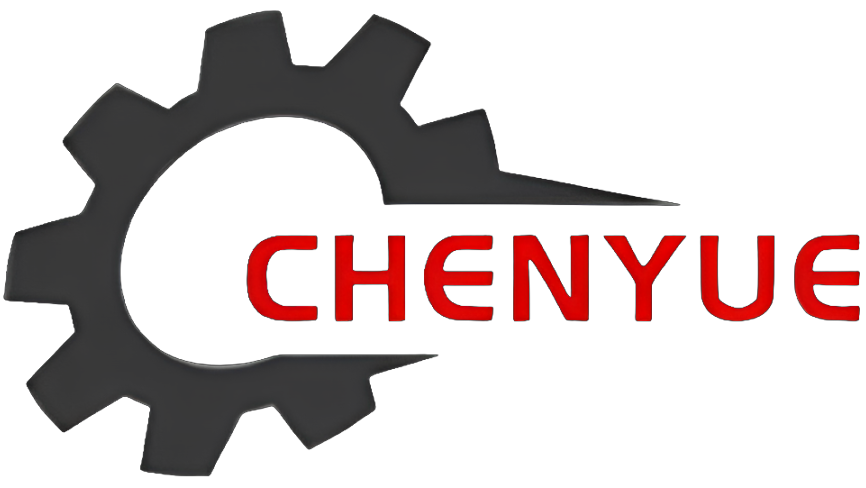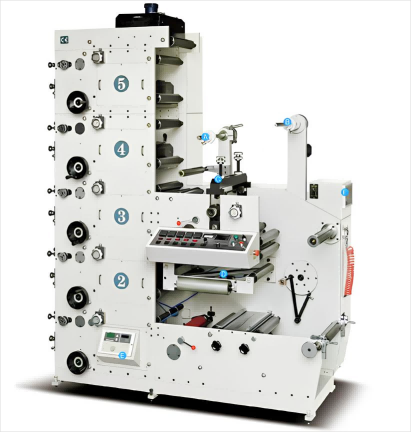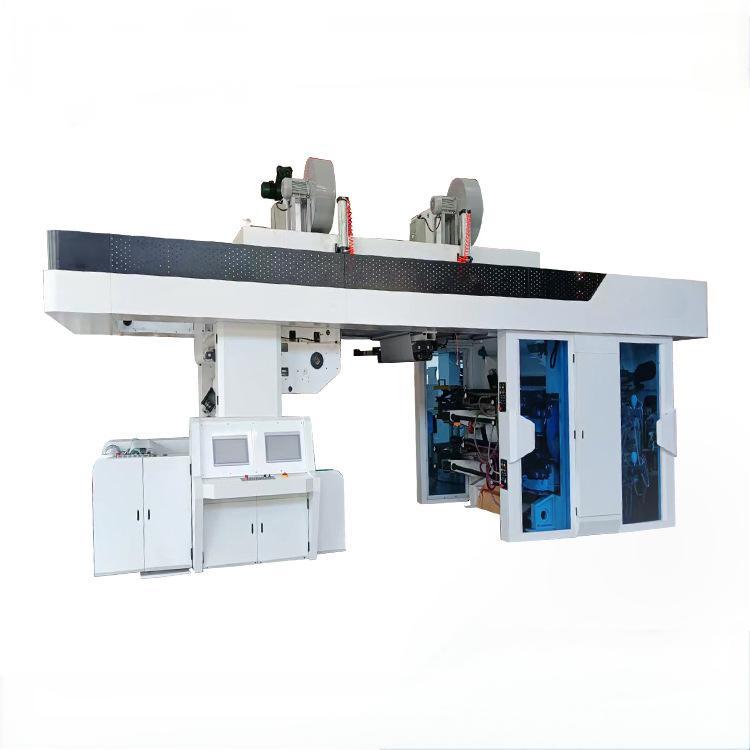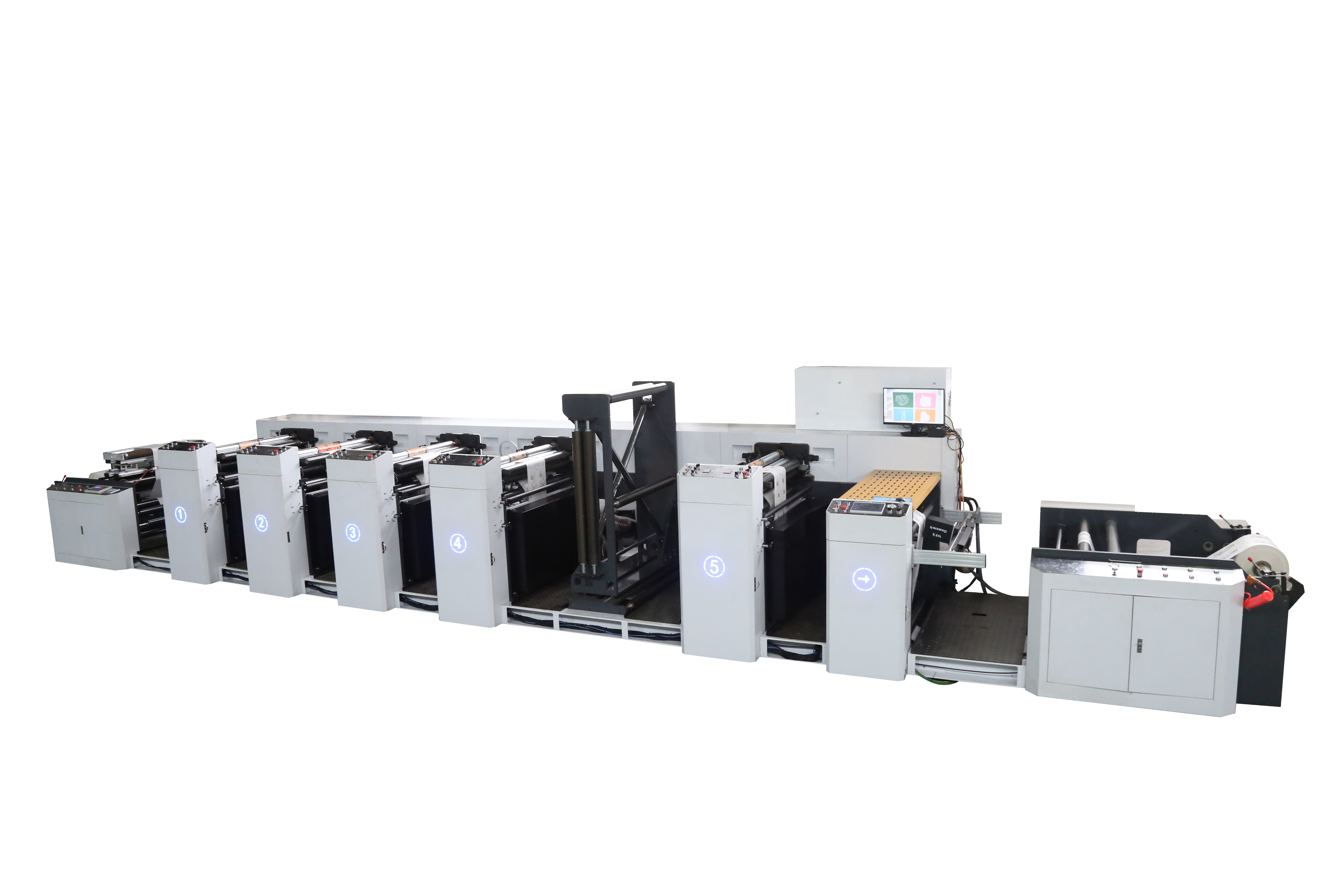Flexography (flexography), also often referred to as flexographic printing, is a printing method that uses a flexographic plate to transfer ink through an anilox roller. For flexographic printing, the printing plate generally uses a photosensitive resin plate with a thickness of 1-5mm. Inks are divided into three categories, namely water-based ink, alcohol-soluble ink, and UV ink. Since the inks used in flexographic printing are environmentally friendly, they have been widely used in food packaging printing and have broad prospects. Flexographic printing is a type of relief printing.
Application
Flexographic printing, offset printing, gravure printing and screen printing are the four most common printing methods in the world, each with its own characteristics and advantages. In countries with developed printing industries such as Europe and the United States, flexographic printing has developed rapidly. Packaging printing has changed from gravure printing and offset printing to flexographic printing. About 70% of packaging materials use flexographic printing.
Characteristic
Compared with gravure printing, offset printing and traditional relief printing, flexographic printing has its own distinctive characteristics:
1. Low cost. Compared with gravure printing machines and corresponding offset printing machines with the same color group, the price of flexographic printing machines is much lower. In addition, the flexographic printing machine integrates printing, die-cutting, glazing and other processes into one. Multiple processes can be completed at one time, eliminating the need to purchase corresponding post-processing equipment, and has a high return on investment.
2. The equipment is simple. The equipment structure is relatively simple, so the operation is relatively simple and convenient.
3. High efficiency. Flexographic printing uses roll materials, which can not only realize double-sided printing of printing materials, but also complete online glazing (or lamination), hot stamping, die-cutting, waste discharge, winding, etc. Work. The production cycle is greatly shortened, manpower, material and financial resources are saved, production costs are reduced, and economic benefits are improved.
4. Wide range, the range of printing materials is relatively wide, such as paper, plastic film, aluminum foil, self-adhesive paper, etc.
5. Good quality, the print quality is good, the printing accuracy can reach 150 lines/inch, and the prints have rich layers, bright colors and good visual effects, which are especially suitable for packaging and printing requirements.
6. Environmental protection, using new water-based inks and solvent-based inks, which are non-toxic and pollution-free, fully comply with the requirements of green environmental protection, and can also meet the requirements of food packaging.
7. Good efficiency. The flexographic printing machine uses roll-type materials and can be used online with many post-press equipment, greatly shortening the cycle. Flexographic printing costs only 10%-20% of gravure printing, consumes 1/3 less ink than gravure printing, saves 40% of electricity, and has a scrap rate of only 1%-2%, which is lower than gravure printing and offset printing, thereby reducing production costs.
3 Types of Printing Presses for Flexo Printing
There are three main press design types for flexographic printing:
Central impression press
In-line press
Stack press.
1. Central Impression (CI) Press
The setup of a CI flexo machine is sometimes compared to the planets’ path around the sun, as the stations are set up around the cylinder. This particular setup is ideal for large jobs as the machine is set up for increased capacity.
The defining feature of the CI press is the impression cylinder, which is the central point of the press layout. As the name suggests, the substrate is fed around the single steel drum impression cylinder at the center.
This cylinder supports the substrate during the printing process, while the substrate in other presses is left unsupported in between printing units. The printing plates are located on both sides of the web and print in a mirror image of each other.
The CI printing machine works on various substrates and is particularly useful for wide widths. A typical CI press is a six-color press. The press maintains a consistent level of pressure with low vibration, which in turn provides reliable prints over the course of a high-capacity run.
The main benefits of the CI press include
- Support for a wide range of substrates due to the drum-type design
- Consistent results for high print quality
- Easy modification for lamination or other post-press processes
- Ability to print on both sides of the substrate simultaneously
How common is a CI press?
The Central impression flexo printing machine can be found in print houses where manufacturing bags and pouches are the main focus. That’s because CI flexo presses provide quality printing for flexible substrates, used for food packaging and for other purposes.
2. Inline press
An inline flexo press is the most common flexo press in print houses handling commercial product packaging. It also handles a variety of substrates and involves six components.
As the name suggests, this press has stations in a sequential line rather than a circular configuration. The lineup is handled along a horizontal line instead of vertically (more on that later).
The in-line press can seamlessly handle a large run of prints. The substrate is pressed between the image carrier and the impression cylinder, with sufficient pressure to maintain ink distribution in a balanced manner.
The color variety available is an advantage of using the inline press. The average availability is eight colors, but a maximum of 20 can be used, depending on the setup.
3. Stack press
The stack press is set up with stations arranged vertically. Most stack-type flexographic printing presses average between six and eight decks. They can be set up to allow both sides of a substrate to be printed during the same trip through the stack-type flexo press. However, the stack flexo press is less effective for thinner substrates, as it fails to hold a high level of precision.
While the stack press is not as precise as some other types, it can be more efficient. The substrate can move from station to station quickly because the stations are arranged vertically. This type of flexo press is often used for printed materials that do not require a high level of precision, such as corrugated cardboard or chipboard.
The main advantage of the stack press is its high efficiency for certain substrates. When working with thicker substrates, this type of flexo press is also very advantageous as it provides a quick way to move from station to station.






